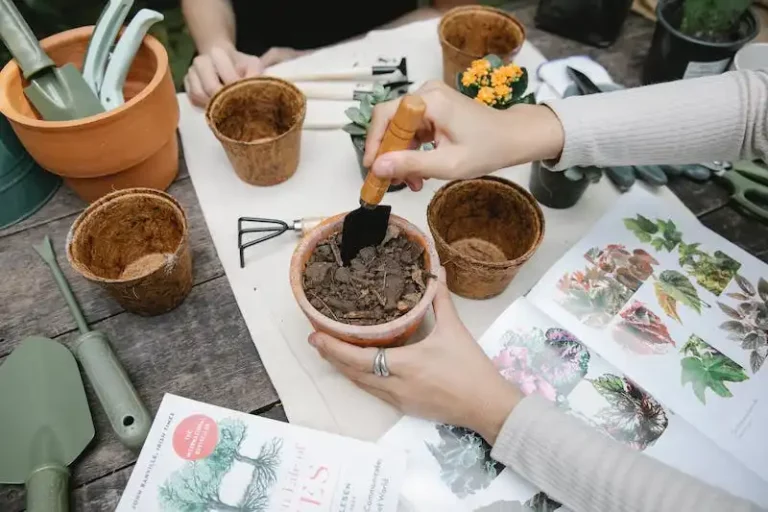Planting and growing your own iTreeSweet Gum can be a rewarding experience. To begin, you should first plant the seeds in the right conditions. These trees are most commonly seen in landscaping due to their beautiful bark and symmetrical shape. If you are interested in identifying these trees in their mature stage, their round, green pods are a good reference point.
Although the iTreeSweet Gum is a smaller tree, it can still grow wide and tall, so it is important to choose a suitable spot in your yard. Additionally, these trees can be grown in pots or as bonsai, making them a versatile choice for those with limited space.
One of the great things about iTreeSweet Gum trees is that they are very hardy and can withstand a variety of conditions. They are frost tolerant and can thrive in both moist and well-drained soils. If you want to guarantee their growth, make sure to provide regular watering during dry months.
While the iTreeSweet Gum may look like a sweet treat, it is important to note that the seeds and pods can be unsafe for consumption. They contain a potential toxin that can cause problems when ingested. However, these trees have been used in traditional medicine, and the bark extract has been shown to have antiviral properties similar to Tamiflu.
Overall, the iTreeSweet Gum is a beautiful addition to any garden or landscape. Its columnar shape and vibrant foliage provide shade and aesthetic appeal. If you are looking for a tree that is easy to care for, the iTreeSweet Gum is a good choice. Just be prepared for its litter of seed pods!
Source links:
Sweetgum
The sweetgum tree, also known as liquidambar, is a popular choice in landscaping due to its overall characteristics and potential for growing in a variety of conditions. These trees are most commonly found in the United States and can grow up to 60-75 feet tall, making them a larger option for your yard.
If you are considering planting sweetgum trees in your own yard, there are a few key facts to know. The sweetgum tree produces round, green fruiting pods that contain small winged seeds, commonly referred to as “gum balls.” These seed pods can be a litter hazard, so keep that in mind when planting near a high-traffic area or where you may have difficulty cleaning up after the tree.
The sweetgum tree develops vibrant yellow and red foliage in the fall, adding a splash of color to your landscaping. Additionally, its symmetrical and thorny branches provide shade during the hotter months, making it a good reference for growing conditions. However, it is important to note that sweetgum trees can be unsafe to grow near a house or other structures, as their root systems can potentially cause damage.
If you are interested in growing your own sweetgum tree, you can start by planting seedlings in a fertile and well-drained area. It is best to plant them in spring, around March or April, to give them ample time to develop before the hotter months arrive. Initially, you will need to provide consistent watering for the first few years of their growth. Once established, sweetgum trees are generally low-maintenance and can withstand drought conditions.
When identifying a sweetgum tree, look for its distinct star-shaped leaves with star-like lobes and serrated edges. The leaves are typically glossy and can grow up to 7 inches in diameter. The bark of a sweetgum tree is dark brown and deeply furrowed, adding to its overall ornamental appeal.
In conclusion, sweetgum trees are a popular choice for landscaping due to their general characteristics and the potential for growing in various conditions. They can add beauty to your yard, but also require some maintenance and consideration for their size and litter potential. With the right care and attention, a sweetgum tree can be a valuable addition to any outdoor space.
Grow Your Own Bonsai Tree: Sweet Gum
If you are considering growing your own bonsai tree, the Sweet Gum (Liquidambar styraciflua) is a great choice. This tree is commonly grown for its unique characteristics and beautiful foliage. Here, we will provide some general information on growing and caring for a Sweet Gum bonsai tree.
First, you’ll need to find a suitable location for planting your Sweet Gum bonsai. This tree prefers full sun, so choose a spot where it can receive at least six hours of direct sunlight per day. Additionally, the Sweet Gum tree is quite large in size, so make sure you have enough space for it to grow.
When planting your Sweet Gum bonsai, make sure to provide it with well-draining soil that is fertile and rich in organic matter. This tree prefers a slightly acidic soil pH. If you are unsure about the soil’s pH, you can use a soil testing kit to determine it.
Watering is an essential part of bonsai tree care. The Sweet Gum bonsai requires regular watering, especially during the hot summer months. It is important to keep the soil evenly moist, but be careful not to overwater, as this can lead to root rot. A good rule of thumb is to water when the top inch of soil feels dry to the touch.
Like many bonsai trees, the Sweet Gum requires regular pruning to maintain its shape and size. Pruning should be done in early spring before the new growth starts. Remove any dead or damaged branches and shape the tree by trimming back excessive growth. You can also wire the branches to create the desired bonsai shape.
The Sweet Gum tree produces small green flowers in spring, which are followed by round pods that contain the tree’s seeds. These pods can be a litter problem, so consider removing them if they become excessive. Additionally, the pods may pose a hazard if ingested by animals, like dogs, as they are poisonous.
The bark of the Sweet Gum tree is another characteristic to consider when growing it as a bonsai. As the tree matures, the bark becomes deeply furrowed and develops an attractive pattern. This adds to the overall aesthetic appeal of the tree.
In terms of pests and diseases, the Sweet Gum bonsai is generally not prone to many problems. However, it may be susceptible to frost damage in colder climates. To protect the tree from frost, consider moving it indoors or providing it with a frost cover during the winter months.
Overall, the Sweet Gum bonsai tree is a beautiful addition to any yard or outdoor landscaping. Its unique characteristics, fastigiate size, and beautiful foliage make it a popular choice among bonsai enthusiasts. Just make sure to provide it with the necessary care, and you will be rewarded with a stunning bonsai tree.
For more information on growing and caring for Sweet Gum bonsai trees, you can check the following sites:
| The Spruce | Bonsai Empire | Gardening Know How |
Before starting your bonsai tree journey, it’s essential to do thorough research and gather all the necessary information. These reference sites will provide you with additional guidance and tips for growing your own Sweet Gum bonsai tree.
DEVELOPMENT
The overall development of Sweet Gum trees begins from a seed. It typically takes about 20-30 years for the tree to reach its full height of 60-75 feet. While seedlings can be planted in the ground, it is recommended to start with bonsai-grown trees for a more symmetrical shape.
Sweet Gum trees are known for their thorny pods, which can be seen on the tree during the months of August and September. The pods contain small seeds, which can be carried by birds, wind, or even dogs, and are known to create litter in residential areas.
When growing a Sweet Gum tree, it is important to consider potential problems. The botanical name for the Sweet Gum tree is Liquidambar styraciflua, and it is important to note that the tree has the potential to produce a poisonous resin that can be unsafe if ingested. While the pods are not commonly eaten by animals, it is still important to be cautious, especially if you have pets.
Watering is crucial for the development of the Sweet Gum tree. Although it is a hardy tree, it requires regular watering, especially during hot and dry conditions. It is recommended to water the tree deeply and less frequently, allowing the water to penetrate the soil and reach the roots.
Sweet Gum trees are commonly used in landscaping due to their vibrant yellow and orange fall foliage. They are often planted as a border tree or in front of a window to enhance the view. The columnar or round shape of the tree makes it a good choice for different sites.
Overall, the development of Sweet Gum trees can be a rewarding experience. With proper care and attention, these trees can grow tall and add beauty to any landscape. However, it is important to think about the potential problems and consider the planting and growing conditions before deciding to grow your own Sweet Gum tree.
References:
- “Sweetgum.” University of Florida IFAS Extension. Accessed August 3, 2024. https://edis.ifas.ufl.edu/fp114.
- “Sweetgum Tree Information: How To Grow A Sweetgum Tree.” Gardening Know How. Accessed August 3, 2024. https://www.gardeningknowhow.com/ornamental/trees/sweetgum/growing-sweetgum-trees.htm.
Sweetgum Liquidambar styraciflua
The Sweetgum Liquidambar styraciflua, commonly known as the sweetgum or liquidambar, is a large deciduous tree that is often sold for landscaping purposes. Its most notable characteristic is its large pods that resemble spiky chestnuts. These seed pods are produced by the female trees and can be seen on the tree throughout the year.
This tree is easily grown and can be a good addition to any yard or garden. It is overall a large, columnar-shaped tree with thorny branches. The sweetgum can grow up to 60-80 feet tall and can provide ample shade in the yard. It is often planted as a shade tree or used as a windbreak, as it is able to withstand strong winds.
If you want to plant a sweetgum tree, it’s important to know some key facts about this species. The liquidambar styraciflua is native to the southeastern United States and is well-suited to that climate. It is fully hardy to USDA Zone 5 and can tolerate a wide range of soil conditions. However, it prefers moist, well-drained soil.
In terms of care and maintenance, the sweetgum tree requires regular watering, especially during the first few years of development. Additionally, it is prone to several potential problems, including leaf spot, cankers, and insect infestations. These issues can be managed with proper pruning and regular inspections.
If you are interested in identifying a sweetgum tree, look for its distinctive foliage. The leaves are star-shaped and have serrated edges. They turn brilliant shades of red, orange, and yellow in the autumn, adding a stunning display of color to the landscape.
Although the sweetgum tree is often sold without a guarantee that it will bear fruit, it is worth noting that the female trees do produce small, winged seedlings. These seedlings can be seen in late summer and early autumn. While the fruiting pods may be considered a nuisance for some homeowners, they are a valuable food source for wildlife.
In conclusion, the sweetgum liquidambar styraciflua is a beautiful tree that can enhance any landscape. It is easy to grow, provides ample shade, and has unique characteristics that make it stand out. If you are considering adding a sweetgum tree to your yard, be sure to learn more about its care and maintenance requirements from a reliable reference source.

